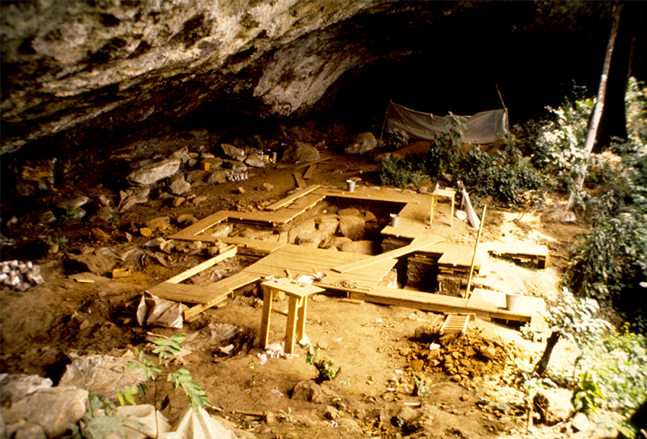An international team led by Harvard Medical School scientists has produced the first genome-wide ancient human DNA sequences from west and central Africa.
The data, recovered from four individuals buried at an iconic archaeological site in Cameroon between 3,000 and 8,000 years ago, enhance our understanding of the deep ancestral relationships among populations in sub-Saharan Africa, which remains the region of greatest human diversity today.
The findings, published Jan. 22 in Nature, provide new clues in the search to identify the populations that first spoke and spread Bantu languages. The work also illuminates previously unknown “ghost” populations that contributed small portions of DNA to present-day African groups.
Research highlights:
- DNA came from the remains of two pairs of children who lived around 3,000 years ago and 8,000 years ago, respectively, during the transition from the Stone Age to the Iron Age.
- The children were buried at Shum Laka, a rock shelter in the Grassfields region of northwestern Cameroon where ancient people lived for tens of thousands of years. The site has yielded prolific artifacts along with 18 human skeletons and lies in the region where researchers suspect Bantu languages and cultures originated. The spread of Bantu languages—and the groups that spoke them—over the past 4,000 years is thought to explain why the majority of people from central, eastern and southern Africa are closely related to one another and to west/central Africans.
- Surprisingly, all four individuals are most closely related to present-day central African hunter-gatherers, who have very different ancestry from most Bantu speakers. This suggests that present-day Bantu speakers in western Cameroon and across Africa did not descend from the sequenced children’s population.
- One individual’s genome includes the earliest-diverging Y chromosome type, found almost nowhere outside western Cameroon today. The findings show that this oldest lineage of modern human males has been present in that region for more than 8,000 years, and perhaps much longer.
- Genetic analyses indicate that there were at least four major lineages deep in human history, between 200,000 and 300,000 years ago. This radiation hadn’t been identified previously from genetic data.
- Contrary to common models, the data suggest that central African hunter-gatherers diverged from other African populations around the same time as southern African hunter-gatherers did.
- Analyses reveal another set of four branching human lineages between 60,000 and 80,000 years ago, including the lineage known to have given rise to all present-day non-Africans.
- The Shum Laka individuals themselves harbor ancestry from multiple deep lineages, including a previously unknown, early-diverging ancestry source in West Africa.
Paper:Mark Lipson, et al., “Ancient West African foragers in the context of African population history,” Nature, DOI 10.1038/s41586-020-1929-1
The work was supported by the Belgian Fund for Scientific Research (FNRS), the Universit. Libre de Bruxelles, the Royal Museum for Central Africa and the Leakey Foundation; by N. Bradman and the Melford Charitable Trust; by the Universit. de Montr.al exploration grant (2018-2020); Wellcome Trust Senior Investigator Award Grant 100719/Z/12/Z; a Sir Henry Dale Fellowship jointly funded by the Wellcome Trust and the Royal Society (grant number 098386/Z/12/Z); by Obra Social La Caixa 328, Secretaria d’Universitats I Recerca del Departament d’Economia i Coneixement de la Generalitat de Catalunya (GRC2017 SGR 880), and a FEDER-MINECO grant (PGC2018-095931-B-100); the National Science Foundation Archaeometry program (grant BCS-1460369); by a fellowship from the Radcliffe Institute for Advanced Study at Harvard University; by the National Institutes of Health (NIGMS GM100233), by an Allen Discovery Center grant and by grant 61220 from the John Templeton Foundation.
Original post https://alertarticles.info


